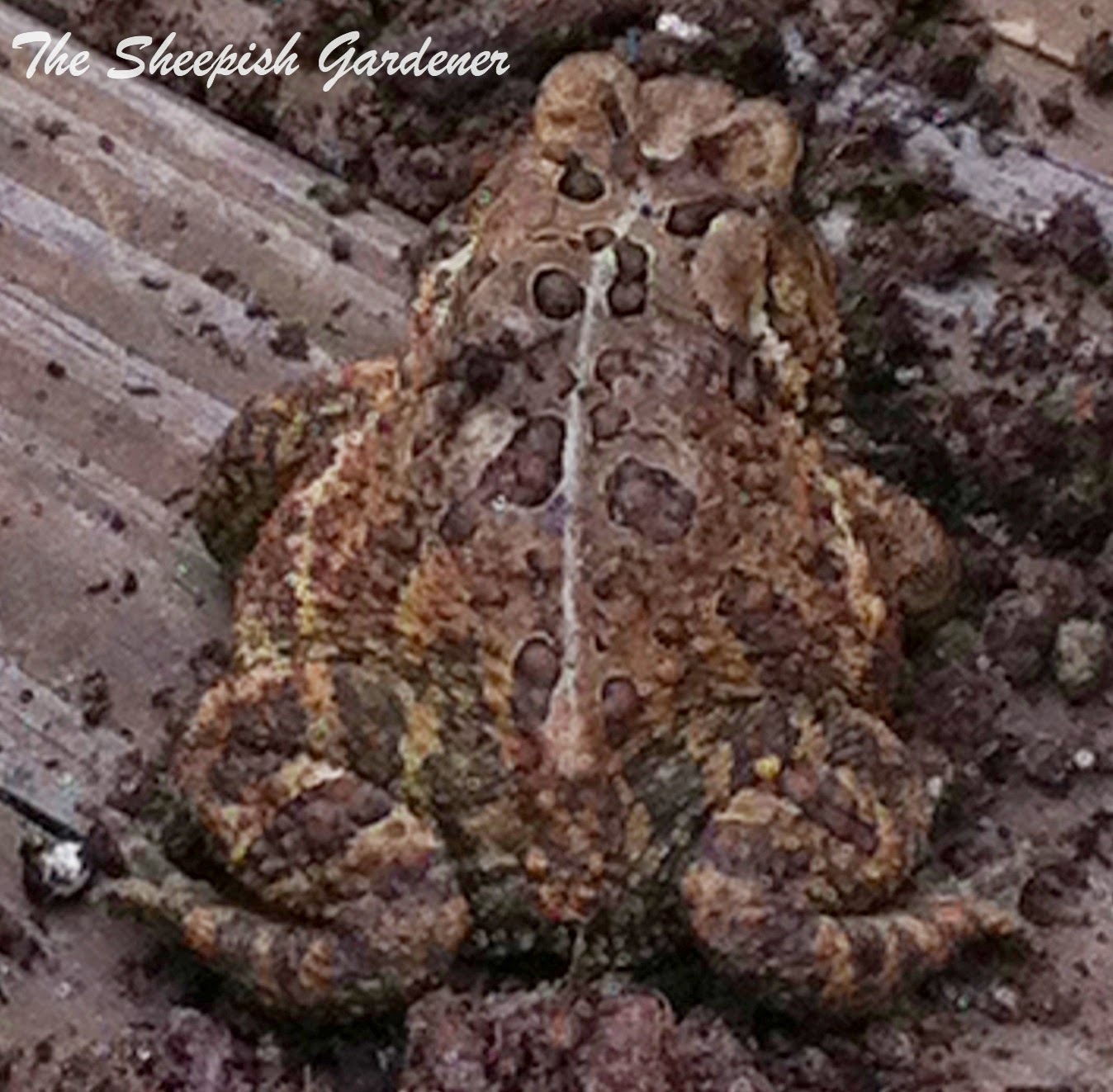Let me explain. (But keep in mind, I am not an expert in any measure. My photos are labeled according to what I have read and are not substantiated by an expert opinion.)
Here in Maryland, we have two native species of toads: Eastern American Toad (Bufo [Anaxyrus] americanus) and Fowler's Toad (Bufo [Anaxyrus] fowler). Both are found throughout the state, with the exception of the counties from Queen Annes Co. south to Dorchester Co. where the MD DNR shows no Eastern American Toads.
The Eastern American toad is slightly larger than the Fowler's, with females being larger than the males. From what I can tell, the toads I've found closest to the house are the Eastern Americans, although it seems difficult to really determine which is which unless you're an expert. And when you factor in the fact that the two species sometimes cross-breed, well. . .
So what, you say. What's so great about a slimy (not), warty, poison-secreeting amphibian? How about the fact that they eat just about everything that bugs you from dusk till dawn? That's right, toads eat the bugs that drive you crazy during your summer evenings. These include beetles, ants, moths and slugs. Unfortunately they also eat earthworms, but that's what keeps the ecosystem in balance.
During the day, the toads will find a cool dark place to rest. This can be leaf litter, burrows, or under rocks or logs. I had one toad that liked to burrow in my silver-tipped thyme pot every morning. One evening I caught it on camera as it emerged for the night.
Of course, you can also provide a toad house in the garden for them. Ideally, toad houses are made of ceramic, terra-cotta, or other such material that retains the night's cool temperatures. They should also be placed in a cool, shady spot because even those materials will get hot if in direct sunlight.
I have made two toad houses out of gourds, and while they are cute and whimsical, unless they are placed in a very cool spot, they are not good for toads to use as the gourds will get hot in the heat of summer. The fist one I made was used once by the toad that liked my thyme pot. I put it in the thick of one of the mint plants spilling over the edges of its container, and the toad huddled in for a day.
++Finished+Toad+Hous+in+Garden+(5).jpg)
Now, most commercial toad houses only have one door. You might think that seems reasonable since only one toad will take up residence in the house, but predators should be taken into consideration. While birds can't see through the roof of the house, snakes and small mammals can get in through the door.
.jpg) |
| Eastern Garter Snake attempting to eat a toad that is too big even if it wasn't puffed up. |
In these instances, a back door is vital to the survival of the toad inside. You can make an escape route one of two ways. If the house has a floor, another door must be made at the back. You can also to that if there isn't a floor. Or, you can place the house in loose soil and dig a small tunnel for the toad to use. They will like the loose flooring, too, for burying into during the day. As you can see in the pictures above, they will completely cover themselves with the soil. It keeps them cool, and the house above will offer more security. (It's important to note that snakes may also take refuge in a cool toad house on a particularly hot day, so beware.)
So, go on and give those beneficial toads a little a/c for those hot days. They will reward you by helping to keep down your bug and slug population.
Toad Power!
Information sources:
Savannah River Ecology Laboratory (American Eastern, Fowler's)
This post is part of Fit Foodie Runs' Linky Party!
This post is part of Fit Foodie Runs' Linky Party!
.jpg)

.JPG)
.JPG)
.JPG)
.JPG)
.jpg)

No comments:
Post a Comment